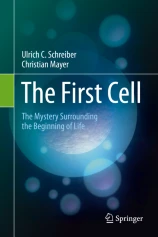
Astrobiology on the International Space Station
Jean-Pierre de Vera
Springer, 2020, Englisch
Dieser Band über Astrobiologie auf der Internationalen Raumstation (ISS) aus der Buchreihe "Springer Briefs in Life Sciences" befasst sich mit den drei grundlegenden Fragen zu Ursprung, Entwicklung, Verbreitung und Zukunft des Lebens im Universum: Wie entsteht und entwickelt sich das Leben? Gibt es Leben außerhalb der Erde und wenn ja, wie können wir es nachweisen? Wie sieht die Zukunft des Lebens auf der Erde und im Universum aus? Das Buch gibt Einblicke in astrobiologische Experimente, die auf der Internationalen Raumstation durchgeführt werden, und erörtert deren Ergebnisse.

Das lebendige Universum: Komplexes Leben auf vielen Planeten?
Dirk Schulze-Makuch, Wlliam Bains, Bernhard Gerl
Springer, 2019, Deutsch (englische Version verfügbar)
Sind wir allein im Universum? Dieses Buch bietet eine einzigartige Perspektive auf die Frage, die die Menschheit von Anbeginn beschäftigt. In klarem und allgemein verständlichem Stil untersuchen zwei führende Forscher aus der Astrobiologie die verschiedenen Wege, die zu einer vielfältigen Biosphäre führen. Ist der Mensch eine galaktische Besonderheit oder entwickelt sich immer komplexes Leben auf Planeten, die lange genug bewohnbar sind? Leben wir in einem „einsamen Universum“ oder gibt es eine Vielzahl von Planeten mit komplexem und mikrobiellem Leben – ein "lebendiges Universum"?

Microbial Evolution under Extreme Conditions
Corien Bakermans (Editor)
De Gruyter, 2015, Englisch

The First Cell
Ulrich Schreiber / Christian Mayer
Springer 2020, Englisch
This book introduces a fresh perspective on the conditions for the genesis of the first cell. An important possible environment of the prehistoric Earth has long been overlooked as a host to the perfect biochemical conditions for this process. The first complexes of continental crust on the early Earth must have already contained systems of interconnected cracks and cavities, which were filled with volatiles like water, carbon dioxide and nitrogen. This book offers insights into how these conditions may have provided the ideal physical and chemical setting for the formation of protocells and early stages of life.
The authors support their hypothesis with a number of astonishing findings from laboratory experiments focusing on a variety of organic compounds, and on the formation of key cellular ingredients and of primitive cell-like structures. Moreover, they discuss the principles of prebiotic evolution regarding the aspects of order and complexity. Guiding readers through various stages of hypotheses and re-created evolutionary processes, the book is enriched with personal remarks and experiences throughout, reflecting the authors' personal quest to solve the mystery surrounding the first cell.